Pots, pans, and bowls
- Abura kiri: Drainer tray for oil
- Agemono nabe: Deep frying pot
- Donabe: Ceramic pot for use on an open flame
- Hangiri: Rice barrel
- Makiyakinabe: Rectangular pan for omelets
- Mushiki and seiro: Steamers
- Otoshi buta: Drop lid
- Rice cooker: Electric appliance for cooking rice
- Suribachi and surikogi: Grinding mortar and pestle
- Takoyakiki: Frying pan for takoyaki
- Usu and Kine: Large mortar and pestle for pounding rice
Abura kiri
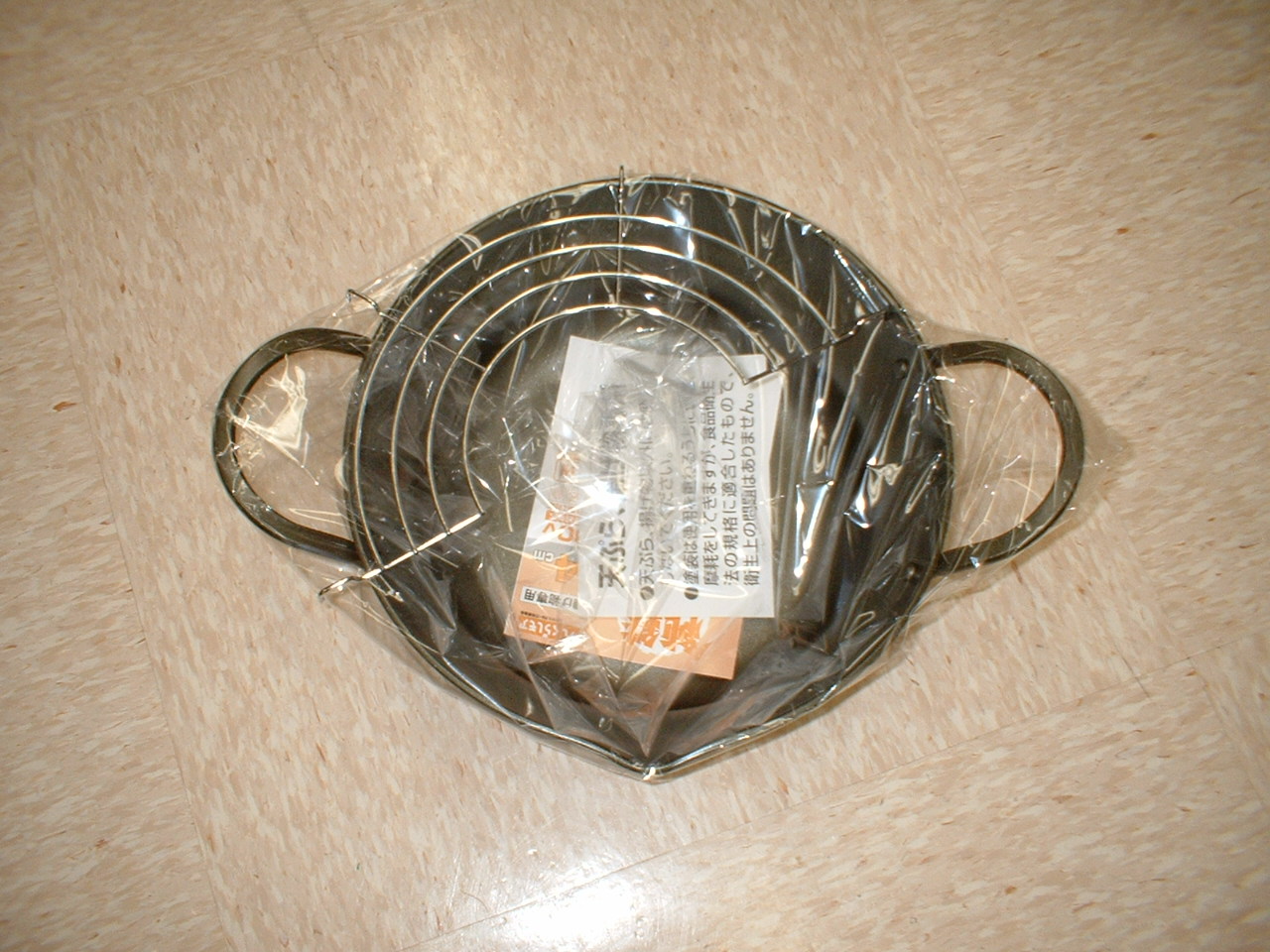
Tempura nabe with Abura kiri
Abura kiri is a shallow tray used to place food after deep frying in the Japanese kitchen. The shallow tray or pan has a rack and an absorbent paper towel to remove excess oil from the food after frying, as for example in tempura.
The Abura kiri is usually used in combination with metal ended Japanese kitchen chopsticks, a net ladle or scoop ami shakushi, and a heavy frying pot agemono nabe.
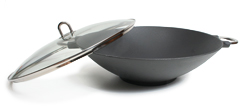
Agemono nabe
Agemono nabe (pot for fried things) are very thick pots used for deep frying in the Japanese kitchen. They are made usually of either cast iron or heavy brass. The thickness ensures an even temperature of the oil inside of the pot. Thin pots cannot maintain an even temperature of the oil, possibly allowing food to slightly under- or overcook.
The agemono nabe is usually used in combination with metal-ended Japanese kitchen chopsticks, a net ladle or scoop ami shakushi, and a tool to drain the oil after frying abura kiri.
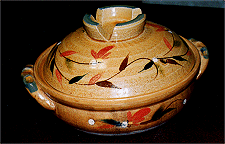
Donabe
Donabe (earthenware pot) are pots made out of a special clay for use over an open flame in the Japanese kitchen. Often, the food is cooked right at the table on a gas burner for various nabemono dishes such as shabu-shabu.
The donabe is usually glazed on the inside and porous on the outside. The material is somewhat similar to earthenware or stoneware, yet these earthen- or stoneware pots should usually not be used over an open flame. Donabe however, can be used over an open flame as well as in an oven if three precautions are taken. First, the outside of the donabe should be completely dry before use, as moisture within the clay will expand in the heat and may chip or crack the pot. Secondly, the pot should be heated gradually to reduce the possibility of cracks due to heat stress. Finally, the pot should never be left over the flame while empty.
If properly treated, these pot would last for decades and few special ones for centuries. When a new donabe is obtained, one should let donabe boil water for hours and dry before using it for cooking. In old ryoutei of Kyoto, decades old donabe would be stored and only used on the special guest. Young donabe would be used for years preparing lunch menues and food for cooks to age them.
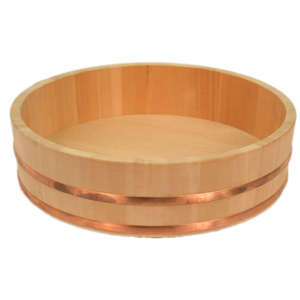
Hangiri
In Japanese cuisine, a hangiri is a round, flat-bottom wooden tub or barrel used in the final steps of preparing rice for sushi. Traditional hangiri are made from cypress wood bound with two copper bands. They may range in diameter from about 30 cm (1 ft) for use at home, to 1 meter (3 feet) for use in a restaurant.
The chef uses the hangiri and a wooden paddle (shamoji) to dress and cool the rice. After it is boiled, the rice is transferred to the hangiri where it is tossed with a dressing made of rice vinegar, sugar, and salt. When the mixing is complete, it is covered with a cloth (fukin) and allowed to cool.
Makiyakinabe
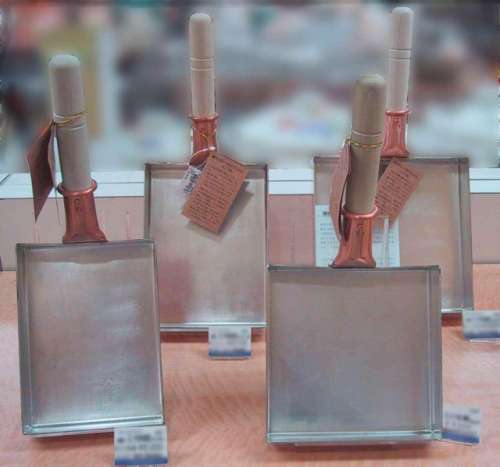
Different makiyakinabe for sale: left: Kansai-type, right: Kanto-type
Makiyakinabe (roll-bake-pan) is a square or rectangular cooking pan used to make Japanese style rolled omelettes. It is also known as tamagoyakiki (tool to make omelettes).
In Japanese cuisine rolled omelettes are made as rectangular thin omelettes and then rolled into a cylindrical or elongated cube shape using Japanese kitchen chopsticks. To obtain a roll with a constant diameter over the entire lengths, the thin omelette should be of rectangular shape. To obtain this shape a special rectangular frying pan is used.
Mushiki and seiro
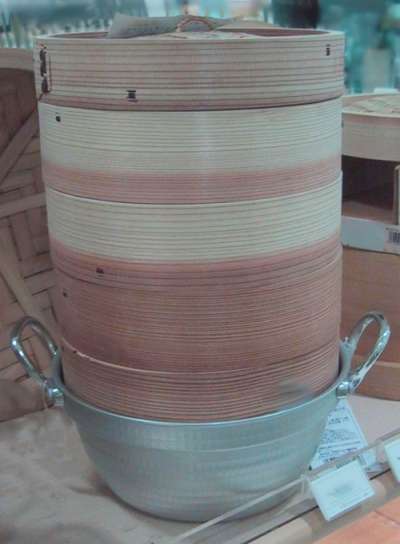
Stacked mushiki on top of a pot
Mushiki (steam-vessel) or seiro (steam-basket) are two different types of Japanese steamers.
Mushiki are round steamers made from bamboo like those used in Chinese cuisine. They can be stacked on top of each other so that the steam can cook many different servings simultaneously. Seiro are large rectangular steamers made traditionally from bamboo but nowadays also often from metal. Seiro can also be stacked.
Otoshi buta
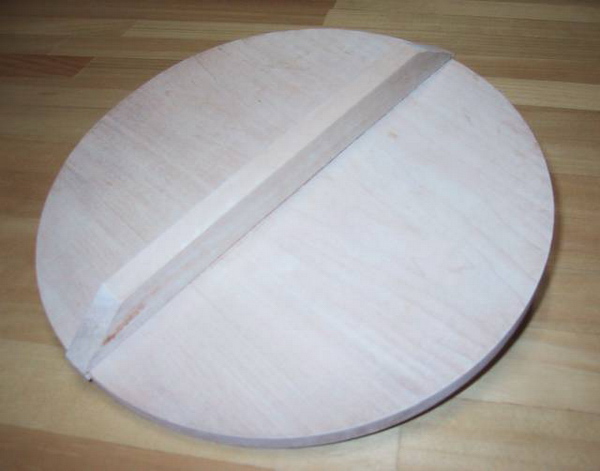
Otoshi buta (drop-lid) are Japanese-style drop-lids for use in Japanese cooking. These round lids float on top of the liquid in a pot while simmering foods. They ensure that the heat is evenly distributed and reduce the tendency of liquid to boil with large bubbles. This reduces the mechanical stress on the food and keeps fragile ingredients in their original shape.
Otoshi buta are almost always made from wood, so they have to be soaked in water for a few minutes before use to avoid absorbing the flavor of the dish and disturbing the flavor of the next dish cooked using the otoshi buta. After use the otoshi buta is washed and dried completely before storing.
Though it depends on the recipe and food being cooked, otoshi buta may be substituted with a sheet of tough cooking paper or aluminum foil.
Rice cooker
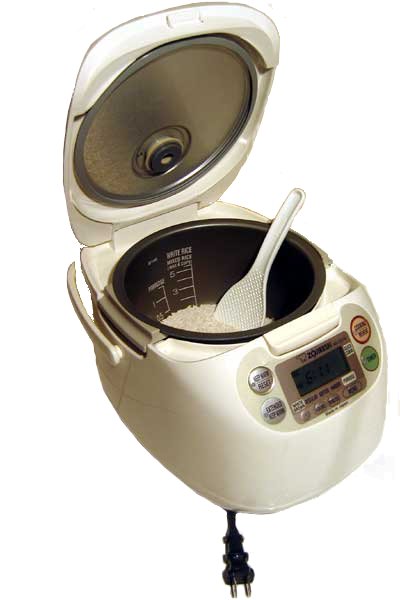
Electric rice cooker including scoop, before cooking
A rice cooker or rice steamer is a self-contained electrical appliance, used primarily for cooking rice. There are also microwave, gas, and open flame variants.
Suribachi and surikogi
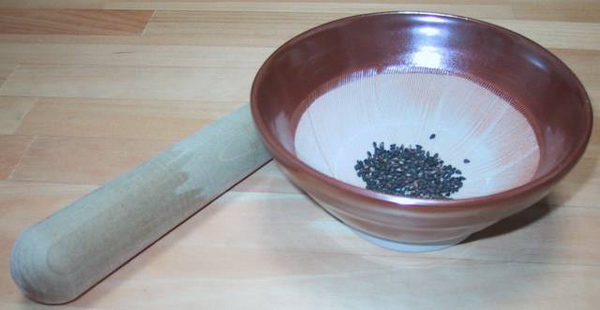
Suribachi (small) and surikogi (medium) with black sesame seeds
Suribachi (grinding-bowl) and surikogi (Grind-Powder-Wood) are a Japanese mortar and pestle. These mortars are used to crush different ingredients for Japanese cooking as for example sesame seeds.
The suribachi is a pottery bowl glazed on the outside with a rough pattern called kushi-no-me on the unglazed inside. This surface is somewhat similar to the surface of the oroshigane (grater). The surikogi pestle is made from wood to avoid excessive wear on the suribachi. Traditionally, the wood from the pepper tree was used, which adds a slight flavor to the food, although nowadays other woods are more common. The bowls have a diameter from 10cm to 30cm. To use the suribachi the bowl is set on a non-slip surface, such as a rubber mat or a damp towel, and the surikogi is used to grind the material. Recently, plastic versions of the suribachi have also become popular, but they have a much shorter lifespan.
The suribachi and surikogi arrived from China after the turn of the last millennium. The mortar was first used for medicine, and only later for food products.
A larger sized Japanese mortar used to pound rice is an usu with a pestle called kine.
The highest mountain on Iwo Jima, Mount Suribachi was named after this kitchen device.
Takoyakiki
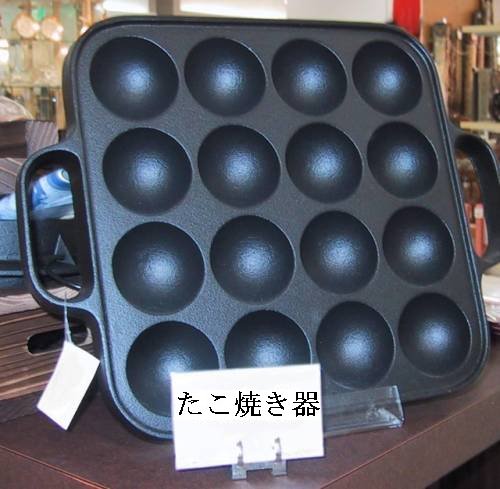
Takoyakiki with 16 molds
A takoyakiki (or takoyaki-nabe), known in English as a takoyaki pan, is a heavy frying pan typically made of cast iron with half-spherical molds used to make takoyaki, a traditional octopus ball snack. They are made heavy in order to evenly heat the takoyaki. Commercial gas-fueled takoyaki cookers are used at Japanese festivals or by street vendors. For home use, electric versions resembling a hotplate, as well as stovetop versions are available.
Usu and Kine
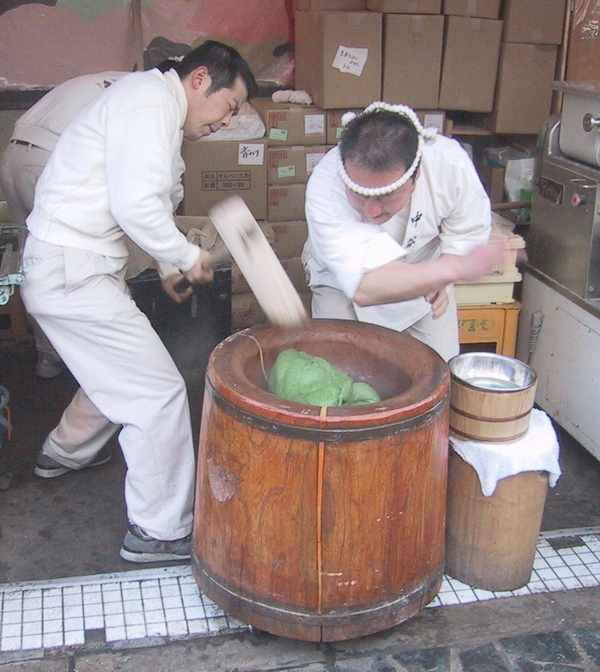
Making mochi in an Usu. The timing is important to avoid injury
An Usu is a large sized Japanese mortar with a pestle called kine and used to pound rice or millet.
While the function of an usu is similar to the smaller suribachi and surikogi mortars, the shape is very different, as the usu usually lacks the rough pattern in the bowl, and had a very different shaped and used pestle.
The usu is usually large sized, with a height of about 1 meter (including pedestal) and a diameter of ca. 30cm. The usu is usually made of wood or stone. The kine is a long wooden hammer with a length exceeding 1m. The usu is usually operated by two people at the same time. One person swings the kine to pound the rice in a similar motion as chopping wood, which is also an equally demanding work. Between each swing, another person puts his hand in the bowl to turn the rice. It is easy to see that the timing is critical for a safe operation of the usu.
The most common use of an usu is to pound cooked white rice into a very sticky mass in order to produce mochi. It is still frequently used in Japan in traditional restaurants and also sometimes in traditional, rural, or wealthier private households. It is said that rice pounded in an usu and kine tastes better than rice that has been processed by an electric machine.